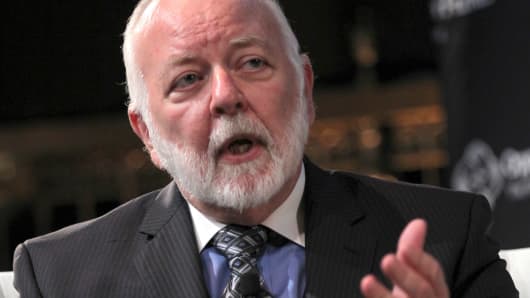The Federal Reserve lives in the best of all possible worlds relative to its control over the banking system. First, the Fed tells the banks that they must put trillions of dollars at the Fed. Second, the institution tells the banks that they are only going to get 0.25 percent on the money deposited. Third, the Fed rakes in the cash profits from these policies.
Consider this, however: The non-seasonally-adjusted estimate of the United States money supply – M-2 – is $11.9 trillion. Yet $2.6 trillion of this total is sitting at the Federal Reserve earning 0.25 percent. This is 21.9 percent of the nation's money supply that is not being put to work in the private sector.
Read MoreWall Street sees Fed rate hike in 3Q: CNBC Fed survey
Think about it. How can one argue that the money supply is growing if $2.6 trillion is being set aside due to Federal Reserve regulations? How can one analyze monetary policy if one does not analyze or even know of the existence of this $2.6 trillion?
Going one step further, how can one call this a capitalist economy if the Federal Reserve is able to tell the banks give me your money and I will pay you whatever I want for it?
Commentary by Richard X. Bove, an equity research analyst at Rafferty Capital Markets and the author of "Guardians of Prosperity: Why America Needs Big Banks" (2013).


